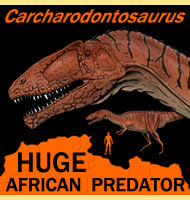In Depth
The Oligocene and Miocene periods were times of change for the world’s ecosystems, particularly those of the northern hemisphere. Long covered by temperate and in places tropical forests, these were now steadily being replaced by grassy plains. Parahippus is a horse that shows a shift towards coping with these changing environments.
Primitive horse forms still had toes like many other kinds of mammals, but in time most of these toes became reduced until a single hoof was left, just like in modern horses. Parahippus still had three visible toes to the lower foot, but only one was in contact with the ground. The other two remaining toes that were still visible were now vestigial, which means that they were still there, just no longer serving a practical purpose. The legs in general had also changed with enhanced musculature that limited side to side movement while increasing forward stride strength. This is a clear adaptation towards living on an open plains environment where fast locomotion would not only be possible, but also preferable to escape from predators that were also becoming faster runners.
Earlier and shorter snouted horses were better adapted for browsing foliage, though changing ecosystems meant a continuing reduction in the amounts of available plants. The head of Parahippus was also proportionately longer than earlier forms so that it could more easily reach lower down to graze upon grass, a plant type that was becoming increasingly common. Grazing grass means that the teeth have to do more grinding and the teeth of Parahippus also had higher tooth crowns to cope with this increase in grinding. These were not new features exclusive to Parahippus as the earlier genus Miohippus also had higher tooth crowns. However the size of the tooth crown increase was more uniform and consistent across all of the teeth of Parahippus, meaning that while the adaptation was essentially the same, it had still managed to become more stabilised. This is a good study for evolution in action since not only can a change be seen to have taken place, it can also be seen to become refined.
Further Reading
– Notice of Remains of Extinct Vertebrata, from the Valley of the Niobrara River, Collected during the Exploring Expedition of 1857, by J. Leidy. – In, Nebraska, under the Command of Lieut. G. K. Warren, U. S. Top. Eng., by Dr. F. V. Hayden, Geologist to the Expedition. Proceedings of the Academy of Natural Sciences of Philadelphia 10:15-89. – 1858.








